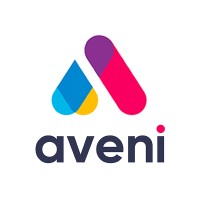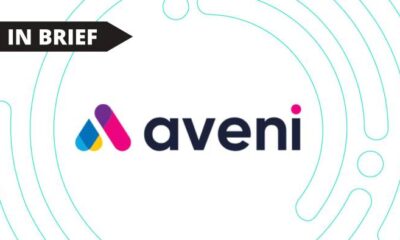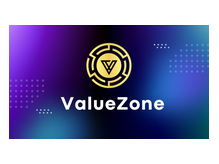Fintech
Neobanking in Transition: Opportunities and Obstacles in a $6.37 Trillion Transaction Era

Neobanking
is taking off across the world, seeing faster and more transparent financial
solutions entering the market and proving successful among consumers. In 2024,
neobanking transaction values are projected to reach more than $6.37 trillion,
surpassing the GDP of Japan, the third largest economy globally.
With
more people than ever banking online, and consumers in developing regions
seeking affordable, reliable, and faster peer-to-peer and cross-border payment
solutions, neobanking is perhaps only at the cusp of completely revolutionizing
the global financial
landscape.
For
nearly a decade, neobanking has been reshaping how businesses conduct transactions and
consumers can leverage financial technology
solutions. The term ‘neobanks’ was first coined back in 2017. However, by this
time the technology and financial software capabilities provided by these
startups had been around since 2013.
Fast-forward
past a pandemic, the supersonic rise of remote working, economic turbulence,
and neobanking is fast taking on a new form, proving to be more efficient and
reliable compared to traditional
banks.
Although
neobanks’ success isn’t solely embedded in the fast and reliable services these
companies can offer, but rather in the technology that has helped it rise to
the occasion over the last decade.
Cloud-Based
Technology
One
thing that has helped set neobanks apart from traditional brick-and-mortar-like
banks is the use of cloud-based
technology and Application Programming Interfaces (APIs). By leveraging
cloud technology, neobanks can seamlessly connect to third-party providers
such as traditional banks and provide consumers with various financial
services all under one umbrella.
Yet,
cloud technology was only the beginning. Today, neobanks heavily rely on the
advancements of artificial
intelligence (AI) to help supercharge the customer experience and machine
learning, gather customer data, and provide all-in-one automated service
solutions.
White-Label
Digital Banking Solutions
Part
of the success of neobanks is their ability to provide white-label digital
banking solutions to larger and more established vendors. Instead of solely
targeting the everyday consumer, neobanks have instead gone to partner and
collaborate with larger financial institutions, helping to provide them with a
more advanced and efficient payment platform.
This allows major financial conglomerates to expand their digital
footprint, enter new markets, scale their services, and broaden their product range. In this case,
neobanks simply act as the provider of the platform, while traditional banks operate and trade under their own brand.
Embedded Banking
Services
As
with anything nowadays, consumers and businesses seek convenience, looking to
have a variety of personalized financial solutions all under one branch. That’s
where neobanks have stepped in, providing clients with the ability to transact,
lend, and manage their accounts within one ecosystem.
Solutions
including business-to-consumer,
business-to-business,
and banking-as-a-service
are all key elements that help make
neobanks stand apart from traditional financial options. Individuals and
businesses can now manage payment solutions, and other financial tasks, such as
accounting, payroll, lending, debit cards, credit cards, and investments under
one roof.
Profitability –
A Key Challenge for Neobanks
Neobanks
have managed to disrupt the industry in recent years, however, many of them are
still struggling to turn a profit. In one report by Simon-Kucher & Partners,
analysts found that despite there were more than 400 neobanks currently
scattered across the world, an estimated 5 percent of them break even.
Yet,
despite all of the success neobanks have accomplished, and seriously
challenging incumbent banks, there’s still a lot of growing uncertainty being faced within the digital financial ecosystem.
For
instance, a recent PYMNTS Intelligence report found that an estimated 9 percent
of consumers currently make use of fintechs as their primary bank. While it’s
possible to see this figure expand in the coming years, 47 percent of consumers
said that they remain hesitant to use digital-only banks and fintechs.
Some
of the neobanks (Chime, Monzo, Starling) operate with uneven profitability.
Chime for example generates the majority of its income from Visa, garnering
revenue from fees, and customers using cards at out-of-network ATMs.
Similarly,
Monzo generates roughly 75 percent of its income through interchange fees,
while Chime and Starling receive some portion of their income through these
fees. However, both Mastercard and Visa have said that they will reduce
interchange rates by about 0.05% over several years.
Neobanks
are evolving their offerings to capture more of the consumer market, including
providing new lines of credit and subordinated debt to improve their capital
structures. Subordinated debt, an unsecured type of debt used after obtaining
senior debt, offers neobanks a means to secure additional financing, albeit at
higher risk and interest rates.
While
these instruments could enhance profitability, other options like insured
deposits and subordinate equity play vital roles. Competition drives
neobanks to offer attractive features, but monetizing them demands long-term
investment, potentially impacting short-term profitability. To sustain growth,
neobanks must establish robust capital structures that secure funding for
innovative financial solutions without diluting ownership.
A Gateway of New
Problems
Neobanks are expanding their product offerings
to meet the needs of the financial consumer market, but face challenges
including scrutiny over lending practices and concerns about predatory lending,
particularly in developing regions where digital banking is on the rise.
Reports indicate abuse of digital banks’ lending services, prompting regulatory
transformations supported by governments.
However, incumbent banks question the
long-term impact on consumers and the financial ecosystem. Neobanks additionally grapple with liquidity access, potential solutions involving strategic
partnerships and diverse market segments. Regulatory compliance
and the implications of subordinated debt structures complicate their
evolution within the banking ecosystem.
Final Thoughts
Neobanks
help to connect consumers and businesses to a bigger, and more sophisticated
network, however, for many the challenges of profitability remain one of their
biggest barriers to scalability . Yet, as we begin to better understand
neobanks’ place within the broader financial ecosystem, and consider where it’s
heading, perhaps the challenges we’re facing could become the next
generation of solutions for the wider financial environment.
Neobanking
is taking off across the world, seeing faster and more transparent financial
solutions entering the market and proving successful among consumers. In 2024,
neobanking transaction values are projected to reach more than $6.37 trillion,
surpassing the GDP of Japan, the third largest economy globally.
With
more people than ever banking online, and consumers in developing regions
seeking affordable, reliable, and faster peer-to-peer and cross-border payment
solutions, neobanking is perhaps only at the cusp of completely revolutionizing
the global financial
landscape.
For
nearly a decade, neobanking has been reshaping how businesses conduct transactions and
consumers can leverage financial technology
solutions. The term ‘neobanks’ was first coined back in 2017. However, by this
time the technology and financial software capabilities provided by these
startups had been around since 2013.
Fast-forward
past a pandemic, the supersonic rise of remote working, economic turbulence,
and neobanking is fast taking on a new form, proving to be more efficient and
reliable compared to traditional
banks.
Although
neobanks’ success isn’t solely embedded in the fast and reliable services these
companies can offer, but rather in the technology that has helped it rise to
the occasion over the last decade.
Cloud-Based
Technology
One
thing that has helped set neobanks apart from traditional brick-and-mortar-like
banks is the use of cloud-based
technology and Application Programming Interfaces (APIs). By leveraging
cloud technology, neobanks can seamlessly connect to third-party providers
such as traditional banks and provide consumers with various financial
services all under one umbrella.
Yet,
cloud technology was only the beginning. Today, neobanks heavily rely on the
advancements of artificial
intelligence (AI) to help supercharge the customer experience and machine
learning, gather customer data, and provide all-in-one automated service
solutions.
White-Label
Digital Banking Solutions
Part
of the success of neobanks is their ability to provide white-label digital
banking solutions to larger and more established vendors. Instead of solely
targeting the everyday consumer, neobanks have instead gone to partner and
collaborate with larger financial institutions, helping to provide them with a
more advanced and efficient payment platform.
This allows major financial conglomerates to expand their digital
footprint, enter new markets, scale their services, and broaden their product range. In this case,
neobanks simply act as the provider of the platform, while traditional banks operate and trade under their own brand.
Embedded Banking
Services
As
with anything nowadays, consumers and businesses seek convenience, looking to
have a variety of personalized financial solutions all under one branch. That’s
where neobanks have stepped in, providing clients with the ability to transact,
lend, and manage their accounts within one ecosystem.
Solutions
including business-to-consumer,
business-to-business,
and banking-as-a-service
are all key elements that help make
neobanks stand apart from traditional financial options. Individuals and
businesses can now manage payment solutions, and other financial tasks, such as
accounting, payroll, lending, debit cards, credit cards, and investments under
one roof.
Profitability –
A Key Challenge for Neobanks
Neobanks
have managed to disrupt the industry in recent years, however, many of them are
still struggling to turn a profit. In one report by Simon-Kucher & Partners,
analysts found that despite there were more than 400 neobanks currently
scattered across the world, an estimated 5 percent of them break even.
Yet,
despite all of the success neobanks have accomplished, and seriously
challenging incumbent banks, there’s still a lot of growing uncertainty being faced within the digital financial ecosystem.
For
instance, a recent PYMNTS Intelligence report found that an estimated 9 percent
of consumers currently make use of fintechs as their primary bank. While it’s
possible to see this figure expand in the coming years, 47 percent of consumers
said that they remain hesitant to use digital-only banks and fintechs.
Some
of the neobanks (Chime, Monzo, Starling) operate with uneven profitability.
Chime for example generates the majority of its income from Visa, garnering
revenue from fees, and customers using cards at out-of-network ATMs.
Similarly,
Monzo generates roughly 75 percent of its income through interchange fees,
while Chime and Starling receive some portion of their income through these
fees. However, both Mastercard and Visa have said that they will reduce
interchange rates by about 0.05% over several years.
Neobanks
are evolving their offerings to capture more of the consumer market, including
providing new lines of credit and subordinated debt to improve their capital
structures. Subordinated debt, an unsecured type of debt used after obtaining
senior debt, offers neobanks a means to secure additional financing, albeit at
higher risk and interest rates.
While
these instruments could enhance profitability, other options like insured
deposits and subordinate equity play vital roles. Competition drives
neobanks to offer attractive features, but monetizing them demands long-term
investment, potentially impacting short-term profitability. To sustain growth,
neobanks must establish robust capital structures that secure funding for
innovative financial solutions without diluting ownership.
A Gateway of New
Problems
Neobanks are expanding their product offerings
to meet the needs of the financial consumer market, but face challenges
including scrutiny over lending practices and concerns about predatory lending,
particularly in developing regions where digital banking is on the rise.
Reports indicate abuse of digital banks’ lending services, prompting regulatory
transformations supported by governments.
However, incumbent banks question the
long-term impact on consumers and the financial ecosystem. Neobanks additionally grapple with liquidity access, potential solutions involving strategic
partnerships and diverse market segments. Regulatory compliance
and the implications of subordinated debt structures complicate their
evolution within the banking ecosystem.
Final Thoughts
Neobanks
help to connect consumers and businesses to a bigger, and more sophisticated
network, however, for many the challenges of profitability remain one of their
biggest barriers to scalability . Yet, as we begin to better understand
neobanks’ place within the broader financial ecosystem, and consider where it’s
heading, perhaps the challenges we’re facing could become the next
generation of solutions for the wider financial environment.
Fintech
US Agencies Request Information on Bank-Fintech Dealings

Federal banking regulators have issued a statement reminding banks of the potential risks associated with third-party arrangements to provide bank deposit products and services.
The agencies support responsible innovation and banks that engage in these arrangements in a safe and fair manner and in compliance with applicable law. While these arrangements may offer benefits, supervisory experience has identified a number of safety and soundness, compliance, and consumer concerns with the management of these arrangements. The statement details potential risks and provides examples of effective risk management practices for these arrangements. Additionally, the statement reminds banks of existing legal requirements, guidance, and related resources and provides insights that the agencies have gained through their oversight. The statement does not establish new supervisory expectations.
Separately, the agencies requested additional information on a broad range of arrangements between banks and fintechs, including for deposit, payment, and lending products and services. The agencies are seeking input on the nature and implications of arrangements between banks and fintechs and effective risk management practices.
The agencies are considering whether to take additional steps to ensure that banks effectively manage the risks associated with these different types of arrangements.
SUBSCRIBE TO THE NEWSLETTER
And get exclusive articles on the stock markets
Fintech
What changes in financial regulation have impacted the development of financial technology?

Exploring the complex landscape of global financial regulation, we gather insights from leading fintech leaders, including CEOs and finance experts. From the game-changing impact of PSD2 to the significant role of GDPR in data security, explore the four key regulatory changes that have reshaped fintech development, answering the question: “What changes in financial regulation have impacted fintech development?”
- PSD2 revolutionizes access to financial technology
- GDPR Improves Fintech Data Privacy
- Regulatory Sandboxes Drive Fintech Innovation
- GDPR Impacts Fintech Data Security
PSD2 revolutionizes access to financial technology
When it comes to regulatory impact on fintech development, nothing comes close to PSD2. This EU regulation has created a new level playing field for market players of all sizes, from fintech startups to established banks. It has had a ripple effect on other markets around the world, inspiring similar regulatory frameworks and driving global innovation in fintech.
The Payment Services Directive (PSD2), the EU law in force since 2018, has revolutionized the fintech industry by requiring banks to provide third-party payment providers (TPPs) with access to payment services and customer account information via open APIs. This has democratized access to financial data, fostering the development of personalized financial instruments and seamless payment solutions. Advanced security measures such as Strong Customer Authentication (SCA) have increased consumer trust, pushing both fintech companies and traditional banks to innovate and collaborate more effectively, resulting in a dynamic and consumer-friendly financial ecosystem.
The impact of PSD2 has extended beyond the EU, inspiring similar regulations around the world. Countries such as the UK, Australia and Canada have launched their own open banking initiatives, spurred by the benefits seen in the EU. PSD2 has highlighted the benefits of open banking, also prompting US financial institutions and fintech companies to explore similar initiatives voluntarily.
This has led to a global wave of fintech innovation, with financial institutions and fintech companies offering more integrated, personalized and secure services. The EU’s leadership in open banking through PSD2 has set a global standard, promoting regulatory harmonization and fostering an interconnected and innovative global financial ecosystem.
Looking ahead, the EU’s PSD3 proposals and Financial Data Access (FIDA) regulations promise to further advance open banking. PSD3 aims to refine and build on PSD2, with a focus on improving transaction security, fraud prevention, and integration between banks and TPPs. FIDA will expand data sharing beyond payment accounts to include areas such as insurance and investments, paving the way for more comprehensive financial products and services.
These developments are set to further enhance connectivity, efficiency and innovation in financial services, cementing open banking as a key component of the global financial infrastructure.
General Manager, Technology and Product Consultant Fintech, Insurtech, Miquido
GDPR Improves Fintech Data Privacy
Privacy and data protection have been taken to another level by the General Data Protection Regulation (GDPR), forcing fintech companies to tighten their data management. In compliance with the GDPR, organizations must ensure that personal data is processed fairly, transparently, and securely.
This has led to increased innovation in fintech towards technologies such as encryption and anonymization for data protection. GDPR was described as a top priority in the data protection strategies of 92% of US-based companies surveyed by PwC.
Financial Expert, Sterlinx Global
Regulatory Sandboxes Drive Fintech Innovation
Since the UK’s Financial Conduct Authority (FCA) pioneered sandbox regulatory frameworks in 2016 to enable fintech startups to explore new products and services, similar frameworks have been introduced in other countries.
This has reduced the “crippling effect on innovation” caused by a “one size fits all” regulatory approach, which would also require machines to be built to complete regulatory compliance before any testing. Successful applications within sandboxes give regulators the confidence to move forward and address gaps in laws, regulations, or supervisory approaches. This has led to widespread adoption of new technologies and business models and helped channel private sector dynamism, while keeping consumers protected and imposing appropriate regulatory requirements.
Co-founder, UK Linkology
GDPR Impacts Fintech Data Security
A big change in financial regulations that has had a real impact on fintech is the 2018 EU General Data Protection Regulation (GDPR). I have seen how GDPR has pushed us to focus more on user privacy and data security.
GDPR means we have to handle personal data much more carefully. At Leverage, we have had to step up our game to meet these new rules. We have improved our data encryption and started doing regular security audits. It was a little tricky at first, but it has made our systems much more secure.
For example, we’ve added features that give users more control over their data, like simple consent tools and clear privacy notices. These changes have helped us comply with GDPR and made our customers feel more confident in how we handle their information.
I believe that GDPR has made fintech companies, including us at Leverage, more transparent and secure. It has helped build trust with our users, showing them that we take data protection seriously.
CEO & Co-Founder, Leverage Planning
Related Articles
Fintech
M2P Fintech About to Raise $80M

Application Programming Interface (API) Infrastructure Platform M2P Financial Technology has reached the final round to raise $80 million, at a valuation of $900 million.
Specifically, M2P Fintech, formerly known as Yap, is closing a new funding round involving new and existing investors, according to entrackr.com. The India-based company, which last raised funding two and a half years ago, previously secured $56 million in a round led by Insight Partners, earning a post-money valuation of $650 million.
A source indicated that M2P Fintech is ready to raise $80 million in this new funding round, led by a new investor. Existing backers, including Insight Partners, are also expected to participate. The new funding is expected to go toward enhancing the company’s technology infrastructure and driving growth in domestic and international markets.
What does M2P Fintech do?
M2P Fintech’s API platform enables businesses to provide branded financial services through partnerships with fintech companies while maintaining regulatory compliance. In addition to its operations in India, the company is active in Nepal, UAE, Australia, New Zealand, Philippines, Bahrain, Egypt, and many other countries.
Another source revealed that M2P Fintech’s valuation in this funding round is expected to be between USD 880 million and USD 900 million (post-money). The company has reportedly received a term sheet and the deal is expected to be publicly announced soon. The Tiger Global-backed company has acquired six companies to date, including Goals101, Syntizen, and BSG ITSOFT, to enhance its service offerings.
According to TheKredible, Beenext is the company’s largest shareholder with over 13% ownership, while the co-founders collectively own 34% of the company. Although M2P Fintech has yet to release its FY24 financials, it has reported a significant increase in operating revenue. However, this growth has also been accompanied by a substantial increase in losses.
Fintech
Scottish financial technology firm Aveni secures £11m to expand AI offering

By Gloria Methri
Today
- To come
- Aveni Assistance
- Aveni Detection
Artificial intelligence Financial Technology Aveni has announced one of the largest Series A investments in a Scottish company this year, amounting to £11 million. The investment is led by Puma Private Equity with participation from Par Equity, Lloyds Banking Group and Nationwide.
Aveni combines AI expertise with extensive financial services experience to create large language models (LLMs) and AI products designed specifically for the financial services industry. It is trusted by some of the UK’s leading financial services firms. It has seen significant business growth over the past two years through its conformity and productivity solutions, Aveni Detect and Aveni Assist.
This investment will enable Aveni to build on the success of its existing products, further consolidate its presence in the sector and introduce advanced technologies through FinLLM, a large-scale language model specifically for financial services.
FinLLM is being developed in partnership with new investors Lloyds Banking Group and Nationwide. It is a large, industry-aligned language model that aims to set the standard for transparent, responsible and ethical adoption of generative AI in UK financial services.
Following the investment, the team developing the FinLLM will be based at the Edinburgh Futures Institute, in a state-of-the-art facility.
Joseph Twigg, CEO of Aveniexplained, “The financial services industry doesn’t need AI models that can quote Shakespeare; it needs AI models that deliver transparency, trust, and most importantly, fairness. The way to achieve this is to develop small, highly tuned language models, trained on financial services data, and reviewed by financial services experts for specific financial services use cases. Generative AI is the most significant technological evolution of our generation, and we are in the early stages of adoption. This represents a significant opportunity for Aveni and our partners. The goal with FinLLM is to set a new standard for the controlled, responsible, and ethical adoption of generative AI, outperforming all other generic models in our select financial services use cases.”
Previous Article
Network International and Biz2X Sign Partnership for SME Financing
IBSi Daily News Analysis

SMBs Leverage Cloud to Gain Competitive Advantage, Study Shows
IBSi FinTech Magazine

- The Most Trusted FinTech Magazine Since 1991
- Digital monthly issue
- Over 60 pages of research, analysis, interviews, opinions and rankings
- Global coverage
subscribe now
-

 DeFi11 months ago
DeFi11 months agoDeFi Technologies Appoints Andrew Forson to Board of Directors
-

 Fintech12 months ago
Fintech12 months agoUS Agencies Request Information on Bank-Fintech Dealings
-

 News1 year ago
News1 year agoBlock Investors Need More to Assess Crypto Unit’s Earnings Potential, Analysts Say — TradingView News
-

 DeFi11 months ago
DeFi11 months agoSwitchboard Revolutionizes DeFi with New Oracle Aggregator
-

 DeFi11 months ago
DeFi11 months agoIs Zypto Wallet a Reliable Choice for DeFi Users?
-

 News1 year ago
News1 year agoBitcoin and Technology Correlation Collapses Due to Excess Supply
-

 Fintech12 months ago
Fintech12 months agoWhat changes in financial regulation have impacted the development of financial technology?
-

 Fintech12 months ago
Fintech12 months agoScottish financial technology firm Aveni secures £11m to expand AI offering
-

 Fintech12 months ago
Fintech12 months agoScottish financial technology firm Aveni raises £11m to develop custom AI model for financial services
-

 News1 year ago
News1 year agoValueZone launches new tools to maximize earnings during the ongoing crypto summer
-

 Videos5 months ago
Videos5 months ago“Artificial intelligence is bringing us to a future that we may not survive” – Sco to Whitney Webb’s Waorting!
-

 DeFi1 year ago
DeFi1 year agoTON Network Surpasses $200M TVL, Boosted by Open League and DeFi Growth ⋆ ZyCrypto






